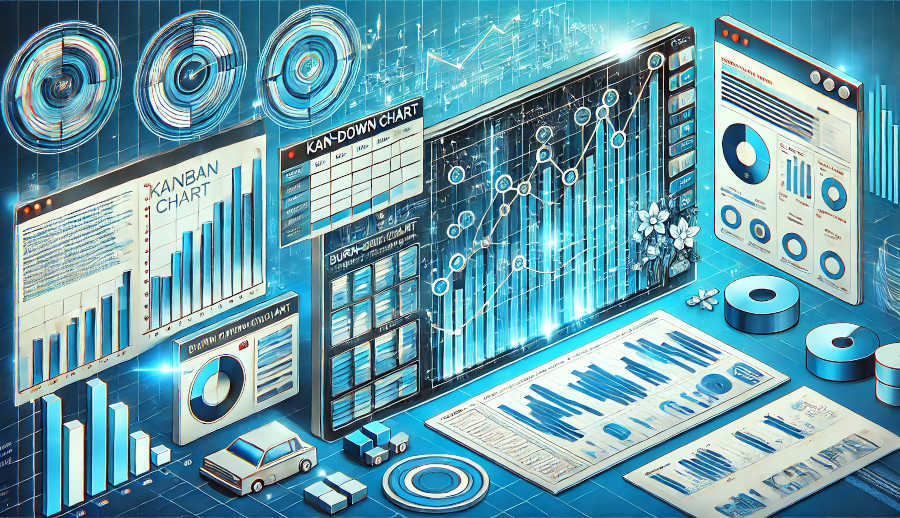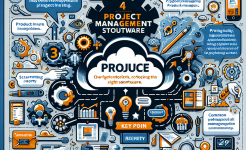The Integrated Product Development (IPD) flowchart is a comprehensive and structured approach to product development. It serves as a roadmap that guides companies through every stage of bringing a new product to market. At its core, the IPD flowchart is designed to streamline processes, enhance communication, and improve overall efficiency in product development.
This flowchart encompasses a series of well - defined phases, from the initial concept generation to the post - launch evaluation. By clearly outlining each step, it ensures that all stakeholders, including product managers, engineers, marketers, and sales teams, are on the same page. This clarity reduces misunderstandings and miscommunications that often plague traditional product development methods.
In addition, the IPD flowchart is not a static document. It can be customized and adapted to fit the specific needs and characteristics of different industries, products, and companies. Whether it's a high - tech startup developing the latest software application or a large manufacturing firm creating a new consumer product, the IPD flowchart can be tailored to optimize the development cycle.
Concept Generation Phase
The concept generation phase is the starting point of the IPD flowchart. This is where ideas for new products are born. It involves market research, customer feedback collection, and internal brainstorming sessions. Market research helps in identifying emerging trends, unmet customer needs, and competitive landscapes. By analyzing market data, companies can spot opportunities for new products that have the potential to gain a significant market share.
Customer feedback is also crucial during this phase. Direct interactions with customers, surveys, and reviews provide valuable insights into what customers want and expect from a product. This information forms the basis for developing product concepts that are likely to resonate with the target audience. Internal brainstorming sessions, on the other hand, bring together the diverse perspectives of employees from different departments. This cross - functional collaboration can lead to innovative and unique product ideas.
Once a pool of concepts is generated, they are evaluated based on various criteria such as feasibility, market potential, and alignment with the company's strategic goals. This evaluation process helps in selecting the most promising concepts to move forward in the product development cycle. It ensures that resources are not wasted on ideas that are unlikely to succeed in the market.
Planning and Strategy Development
After the concept is selected, the planning and strategy development phase kicks in. This phase involves creating a detailed plan that outlines the scope, schedule, budget, and resources required for the product development. The scope defines what features and functions the product will have, setting clear boundaries for the development team.
The schedule is a critical aspect of this phase. It breaks down the entire development process into smaller, manageable tasks and assigns deadlines to each task. A well - planned schedule helps in ensuring that the product is launched on time, meeting market demands. The budget, meanwhile, allocates financial resources to different aspects of the development, including research, design, prototyping, and testing.
In addition to the technical aspects, a marketing and business strategy is also developed during this phase. The marketing strategy focuses on how to position the product in the market, target the right customers, and promote it effectively. The business strategy, on the other hand, looks at the overall profitability of the product, including pricing, distribution channels, and revenue projections. This holistic approach to planning and strategy development ensures that the product is not only technically sound but also commercially viable.
Design and Development
The design and development phase is where the product concept starts to take shape. This involves both the design of the product's form and function. Industrial designers work on creating an aesthetically pleasing and user - friendly product design, while engineers focus on the technical aspects such as functionality, performance, and reliability.
During this phase, prototypes are often built to test and validate the design. Prototypes can be physical models or digital simulations, depending on the nature of the product. They allow the development team to identify any design flaws or technical issues early in the process. By testing the prototypes, they can make necessary adjustments and improvements before moving on to the full - scale production.
Collaboration between different teams is essential during the design and development phase. Designers, engineers, and other stakeholders need to communicate effectively to ensure that the product meets all the requirements. This cross - functional collaboration helps in integrating different aspects of the product, such as design, functionality, and manufacturability. It also speeds up the development process by reducing the need for rework and revisions.

Testing and Validation
Testing and validation are crucial steps in the IPD flowchart to ensure that the product meets the required quality standards. This phase involves various types of testing, including functional testing, performance testing, usability testing, and reliability testing. Functional testing verifies that the product performs all its intended functions correctly. Performance testing checks the product's speed, capacity, and efficiency under different conditions.
Usability testing focuses on the user experience, ensuring that the product is easy to use and navigate. Reliability testing, on the other hand, assesses the product's ability to perform consistently over time and under various environmental conditions. These tests are conducted using a variety of methods, such as manual testing, automated testing, and beta testing with real users.
The results of the testing and validation phase are used to identify any defects or areas for improvement. If issues are found, the development team works to fix them. This iterative process of testing, identifying problems, and fixing them continues until the product meets all the quality requirements. By thoroughly testing and validating the product, companies can reduce the risk of product failures and customer dissatisfaction after the launch.
Launch and Commercialization
The launch and commercialization phase is the culmination of the product development cycle. This is when the product is introduced to the market. A well - planned launch strategy is essential to create awareness, generate interest, and drive sales. This includes activities such as product announcements, marketing campaigns, and distribution channel activation.
Marketing campaigns play a vital role in creating awareness about the new product. They use various channels, such as social media, advertising, and public relations, to reach the target audience. Distribution channel activation ensures that the product is available in the right places at the right time. This involves working with retailers, wholesalers, and online platforms to get the product to the customers.
Once the product is launched, post - launch evaluation is also an important part of this phase. This involves collecting feedback from customers, monitoring sales performance, and analyzing market reactions. The insights gained from the post - launch evaluation can be used to make further improvements to the product, develop new features, or plan future product launches.
Optimization of the Product Development Cycle
The IPD flowchart optimizes the product development cycle in several ways. Firstly, by providing a structured and sequential approach, it reduces the chances of scope creep. Scope creep often occurs in unstructured development processes, where requirements keep changing during the development, leading to delays and cost overruns. The IPD flowchart clearly defines each phase and its deliverables, preventing unnecessary changes.
Secondly, the IPD flowchart promotes cross - functional collaboration. Different departments work together from the very beginning of the product development process. This early collaboration helps in integrating different perspectives and expertise, resulting in a better - designed product. It also reduces the time spent on resolving conflicts and misunderstandings that may arise when departments work in isolation.
Finally, the iterative nature of the IPD flowchart, especially in the testing and validation phases, allows for continuous improvement. By identifying and fixing issues early in the process, companies can avoid costly rework and product recalls after the launch. This iterative approach also helps in ensuring that the product meets the highest quality standards, increasing customer satisfaction and loyalty.
Conclusion
In conclusion, the IPD flowchart is a powerful tool for optimizing the product development cycle. It provides a comprehensive and structured framework that guides companies through every stage of product development, from concept generation to post - launch evaluation.
By following the IPD flowchart, companies can streamline their processes, enhance communication, and improve overall efficiency. The structured approach reduces the risk of scope creep, while cross - functional collaboration ensures that the product benefits from diverse perspectives. The iterative nature of the flowchart allows for continuous improvement, resulting in a high - quality product that meets customer needs and expectations.
Moreover, the IPD flowchart can be customized to fit the specific requirements of different industries and products. Whether it's a software company developing the latest mobile app or a consumer goods manufacturer launching a new household product, the IPD flowchart can be tailored to optimize the development cycle. In today's competitive business environment, where speed to market and product quality are crucial, the IPD flowchart offers a proven methodology for companies to succeed in product development.
ARTICLE TITLE :How the IPD flowchart optimizes the product development cycle ,AUTHOR :ITpmlib

















